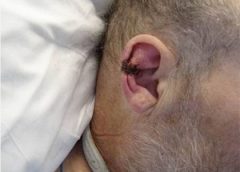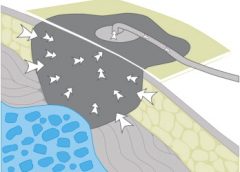Search Results for: pressure
Clinician Resources: Nutrition, Workplace Violence, Pressure Injuries
Learn about resources useful to your practice.
Nutrition and pressure ulcers
Advances in Skin & Wound Care has published “The role of nutrition for pressure ulcer management: National Pressure Ulcer Advisory Panel, European Pressure Ulcer Advisory Panel, and Pan Pacific Pressure Injury Alliance White Paper.” The white paper includes evidence-based nutrition strategies for preventing and managing pressure ulcers. (more…)
Read MoreGet the ‘SKINNI’ on reducing pressure ulcers
By Cindy Barefield, BSN, RN-BC, CWOCN
Like many hospitals, Houston Methodist San Jacinto Hospital uses national benchmarks such as the National Database of Nursing Quality Indicators (NDNQI®) to measure quality outcomes. Based on benchmark reports that showed an increased trend of pressure ulcers in critically ill patients in our hospital, the clinical nurses in our Critical Care Shared Governance Unit-Based Council (CCSGUBC) identified an improvement opportunity. (more…)
Read MoreIf pressure ulcers were apples: A fun inservice program
By Karen Culp, RN, WCC
I’m one of the nurses responsible for the pressure ulcer prevention education program at the 150-bed skilled nursing facility where I work. We try to keep education sessions simple, fun, and interactive. One day, our administrator asked us to develop a crossword puzzle and “minute to win it” education game that would be appropriate for all staff—registered nurses, licensed practical nurses, certified nursing assistants, and staff from administration, the business office, scheduling, maintenance, dietary, and housekeeping. (more…)
Read MoreEvolution of the deep tissue injury or a declining pressure ulcer?
By Jeri Lundgren, BSN, RN, PHN, CWS, CWCN
A declining pressure ulcer decreases the quality of life for patients and places providers at risk for regulatory citations and litigation. But it’s important for clinicians to determine whether the first appearance of skin injury is truly a stage I or II pressure ulcer or if it’s a deep tissue injury (DTI), a unique staging category for a pressure ulcer. Otherwise, a clinician might think a pressure ulcer is getting worse instead of the change being the normal progression of a pressure ulcer that is presenting as a DTI. (more…)
Read MoreAn easy tool for tracking pressure ulcer data
By David L. Johnson, NHA, RAC-CT
As a senior quality improvement specialist with IPRO, the Quality Improvement Organization for New York State over the past 11 years, I’ve been tasked with helping skilled nursing facilities (SNFs) embrace the process of continuous quality improvement. A necessary component of this effort has been to collect, understand, and analyze timely and accurate data. This article discusses a free tool I developed to help SNFs track their data related to pressure ulcers and focus their quality improvement efforts for the greatest impact. (more…)
Read MoreBuilding an effective pressure ulcer prevention program
By Jeri Lundgren, BSN, RN, PHN, CWS, CWCN
As a wound care nurse, do you feel the weight of the world on your shoulders when trying to implement a pressure ulcer prevention program? Many staff members think it’s up to the wound care nurse alone to implement the program. However, a successful program requires involvement from all staff and is a 24/7 endeavor. Here’s how to do it. (more…)
Read MoreClinician Resources: Opioid-Prescribing, Diabetes, Pressure Injuries
Here are a variety of resources you might want to explore.
Considering opioid-prescribing practices
Healthcare providers’ prescribing patterns for opioids vary considerably by state, according to a report in Vital Signs from the Centers for Disease Control and Prevention (CDC). Here are some facts from the report:
• Each day, 46 people die from an overdose of prescription painkillers in the United States.*
• Healthcare providers wrote 259 million prescriptions for painkillers in 2012, enough for every American adult to have a bottle of pills.
• Ten of the highest prescribing states for painkillers are in the South. (more…)
Device–related pressure ulcers: Avoidable or not?
By: Donna Sardina, RN, MHA, WCC, CWCMS, DWC, OMS
A medical device–related pressure ulcer (MDRPU) is defined as a localized injury to the skin or underlying tissue resulting from sustained pressure caused by a medical device, such as a brace; splint; cast; respiratory mask or tubing; tracheostomy tube, collar, or strap; feeding tube; or a negative-pressure wound therapy device. The golden rule of pressure ulcer treatment is to identify the cause of pressure and remove it. Unfortunately, many of the medical devices are needed to sustain the patient’s life, so they can’t be removed. (more…)
Read MoreClinical Notes: Pressure Injury Prevention, Diabetes, LIV
Incidence density best measure of pressure-ulcer prevention program
According to the National Pressure Ulcer Advisory Panel (NPUAP), incidence density is the best quality measure of pressure-ulcer prevention programs. Pressure-ulcer incidence density is calculated by dividing the number of inpatients who develop a new pressure ulcer by 1,000 patient days. Using the larger denominator of patient days allows fair comparisons between institutions of all sizes. (more…)
Read MoreA Saudi rehabilitation facility fights pressure ulcers
By Joanne Aspiras Jovero, BSEd, BSN, RN; Hussam Al-Nusair, MSc Critical Care, ANP, RN; and Marilou Manarang, BSN, RN
A common problem in long-term care facilities, pressure ulcers are linked to prolonged hospitalization, pain, social isolation, sepsis, and death. This article explains how a Middle East rehabilitation facility battles pressure ulcers with the latest evidence-based practices, continual staff education, and policy and procedure updates. Sultan Bin Abdulaziz Humanitarian City (SBAHC) in Riyadh, Saudi Arabia, uses an interdisciplinary approach to address pressure-ulcer prevention and management. This article describes the programs, strategies, and preventive measures that have reduced pressure-ulcer incidence. (more…)
Read MoreGuidelines for safe negative-pressure wound therapy
By Ron Rock MSN, RN, ACNS-BC
Since its introduction almost 20 years ago, negative-pressure wound therapy (NPWT) has become a leading technology in the care and management of acute, chronic, dehisced, traumatic wounds; pressure ulcers; diabetic ulcers; orthopedic trauma; skin flaps; and grafts. NPWT applies controlled suction to a wound using a suction pump that delivers intermittent, continuous, or variable negative pressure evenly through a wound filler (foam or gauze). Drainage tubing adheres to an occlusive transparent dressing; drainage is removed through the tubing into a collection canister. NWPT increases local vascularity and oxygenation of the wound bed and reduces edema by removing wound fluid, exudate, and bacteria. (more…)
Read More


